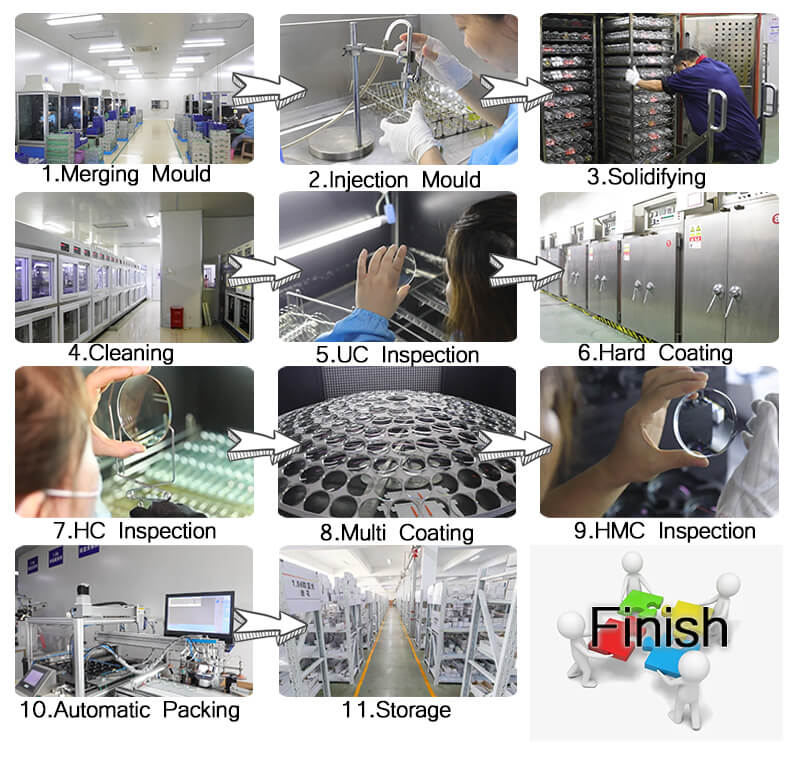1.49 Single Vision UC

Production Details
| Place of Origin: | Jiangsu | Brand Name: | BORIS |
| Model Number: | 1.49 Index Lens | Lenses Material: | resin |
| Vision Effect: | Single Vision | Coating Film: | UC/HC/HMC |
| Lenses Color: | White | Coating Color: | Green/Blue |
| Index: | 1.49 | Specific Gravity: | 1.32 |
| Certification: | CE/ISO9001 | Abbe Value: | 58 |
| Diameter: | 55/60/65/70mm | Design: | spherical |

At the same degree, the higher the refractive index, the thinner the lens. The refractive index of 1.50 or 1.56 is suitable for selection within 300 degrees, the refractive index of 1.56 or 1.60 is suitable for selection between 300 and 500 degrees, the refractive index of 1.67 is suitable for selection between 500 and 800 degrees, and the refractive index of 1.70 and 1.74 is suitable for selection above 800 degrees.
As we all know, the biggest advantage of 1.50 refractive index is that it has a high Abbe number of 58, followed by affordable price, which is especially suitable for people with low myopia.
Production Introduction
The child chooses the lens with a refractive index of 1.50. If your child has visual problems, it is not suitable to wear prevention and control lenses, or the budget does not allow the use of prevention and control lenses. Then ordinary lenses are the most suitable for children (myopia less than 400 degrees). It's a 1.50 index lens.

1. High Abbe number: reduces the effect of dispersion on clarity. Especially in farsighted children, where the center thickness is large, the Abbe number is particularly important. (The human eye has an Abbe number of 58.6, while the 1.50 refractive index lens has an Abbe number of 58)

2. Cheap: Kids change lenses quickly, and it's important that they're cheap.
3. Hardness is also acceptable: compared with 1.56, hardness and density are higher, reducing the impact of scratches on clarity.
The bottom line is: maximize the number of glasses your child wears that look more like the human eye.
Product Process





